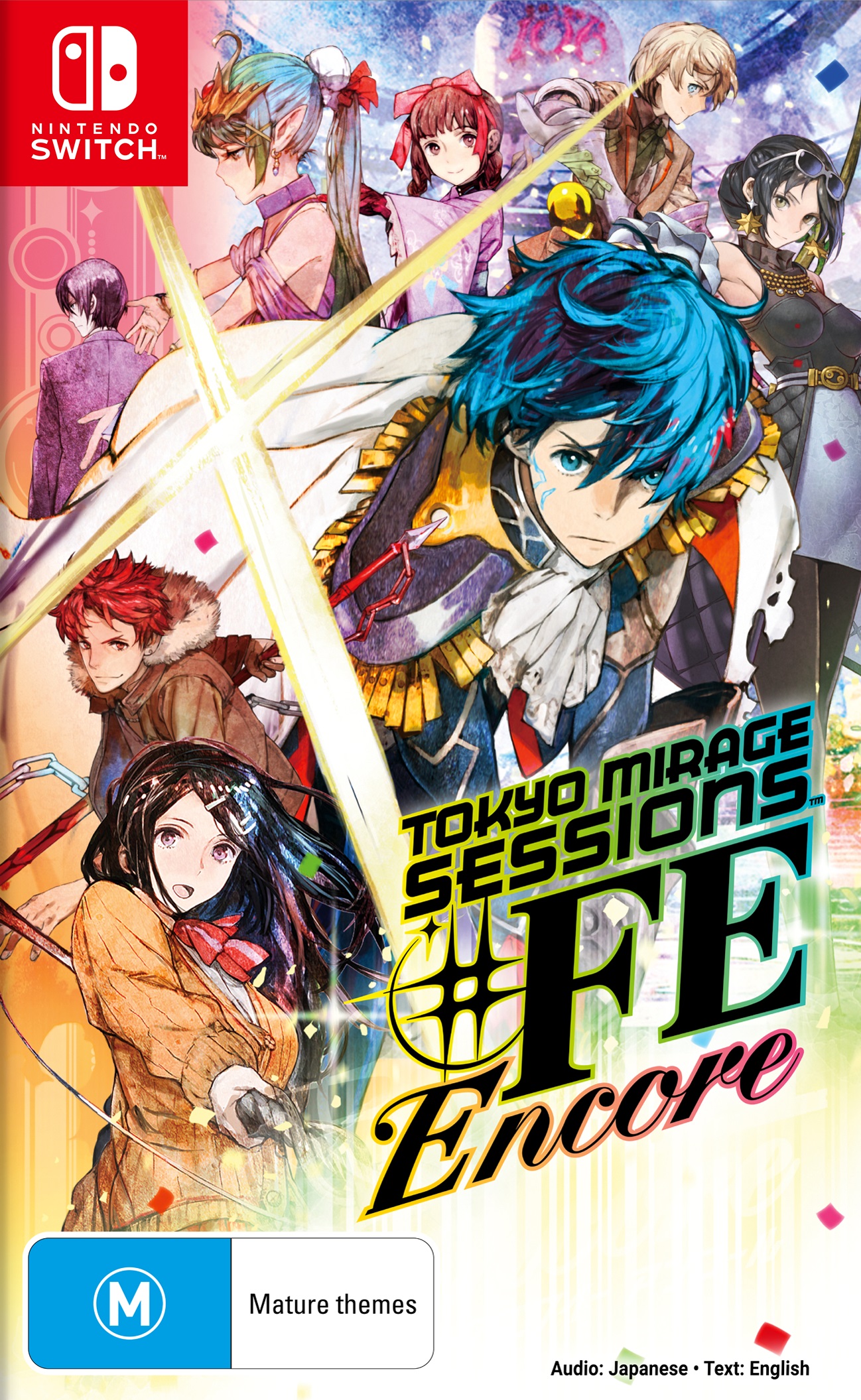Tokyo Mirage Sessions #FE Encore
Developer: Atlus
Publisher: Nintendo
Platform: Nintendo Switch
Release Date: Available Now
Price: $59.99 USD – Available Here $79.95 AUD – Available Here
Overview
Even back when Tokyo Mirage Sessions #FE was first announced many wondered just how a game would properly mix together the Fire Emblem series and the Shin Megami Tensei franchise together into one game and the end result ended up being quite a unique game. Unfortunately, even though Tokyo Mirage Sessions #FE had its shot back in 2016, the fact it was released for the nearly doomed Wii U left it with little hope for even reaching the hands of most RPG fans. Now Nintendo is giving the game another chance with a Nintendo Switch version featuring a variety of enhancements and a bit of added content in the form of Tokyo Mirage Sessions #FE Encore. Is this second chance the one this game needs to step into the spotlight?
Story
Five years prior to the start of our story, a strange event occurred during a live performance that saw every actor and audience member disappear with only one girl surviving the mass disappearance that has yet to be solved to this day. At the current date Itsuki Aoi is attending a special event that will allow girls to try out for an idol position and happens to run into his friend Tsubasa Oribe who wants to follow in her older sister’s footsteps. During the tryouts members in the audience begin to feel sick and strange apparitions appear on the stage and kidnap everyone, including Tsubasa. Despite suffering from the strange exhaustion flowing from these beings, Itsuki follows these strange creatures through a mysterious door.
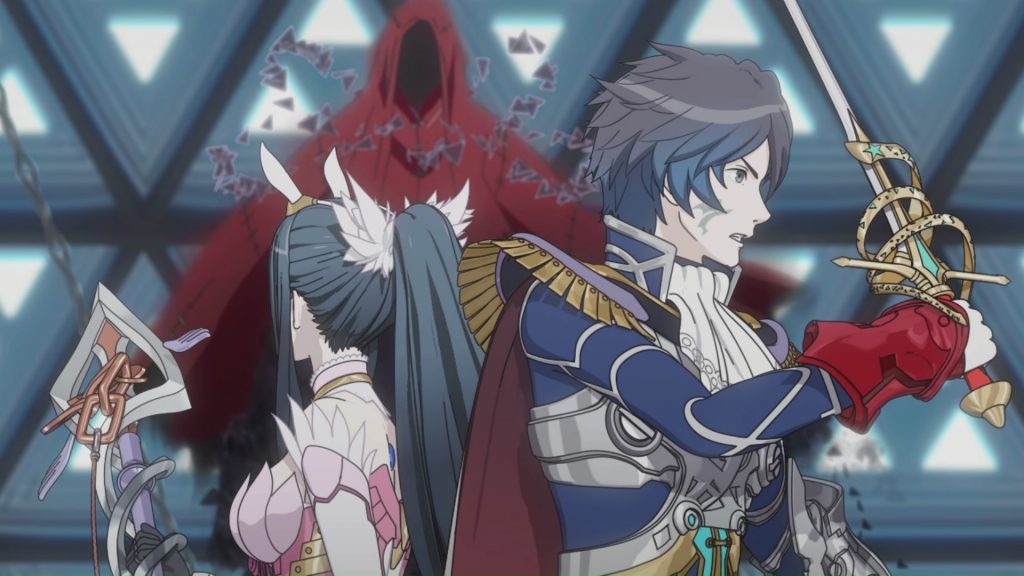
Upon doing so, he finds himself in a strange realm filled with monstrous creatures known as Mirages and somehow manages to obtain the power of one such Mirage by the name of Chrom, giving Itsuki the ability to defend himself and rescue Tsubasa. Upon surviving this ordeal, the pair learn that Mirages are seeking the “Performa” essence contained within talented humans and the only ones that can defeat these beings are Mirage Masters, who just so happen to be what Itsuki and Tsubasa are now. With an already established special force that uses idol production as a front, taking the pair under its wings it will be up to these Mirage Masters to try and find out the truth behind what is happening and possibly save the world all while working as members of the Japanese entertainment industry.
The core storyline of Tokyo Mirage Sessions #FE Encore isn’t an entirely deep one but it does manage to be a highly entertaining one, especially thanks to the fact that the cast of characters are incredibly endearing. The structure of the story features major plot points that are split up with intermissions that allow players to delve a bit deeper into each character’s storyline. Most of these side-stories and sub-quests reward players with various in-game items and skills but often the real rewards come from the character interactions. In fact, thanks to this version of the game featuring all of the Wii U’s DLC there are even more sub-quests to explore and unlike standard enhanced versions of games, these additional quests are mixed properly into the storyline so players will be able to experience them properly rather than sticking all of the new content near the end of the game.
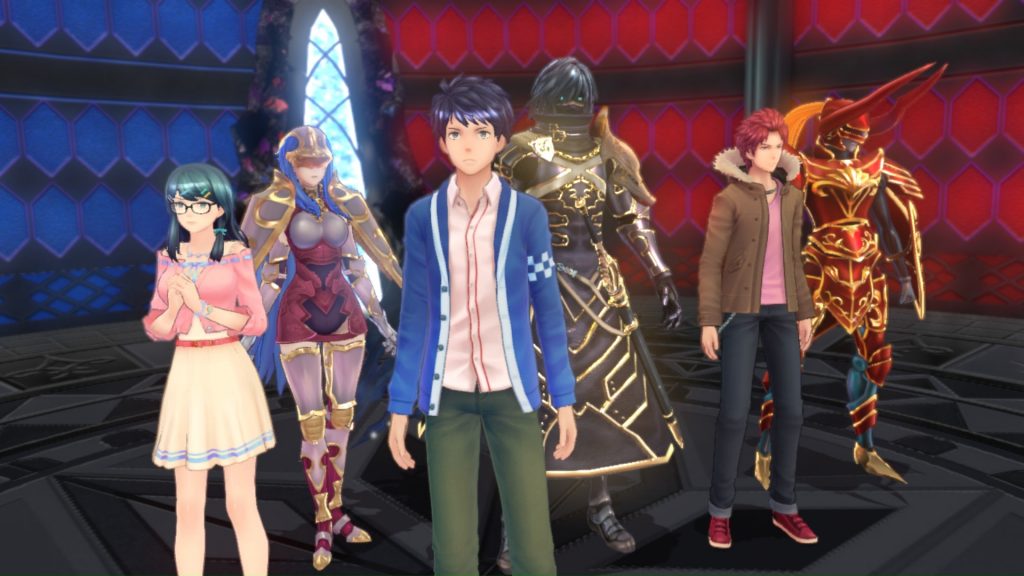
It is also worth noting that while this game may feature a mish-mash of two franchises put together, the actual storyline really doesn’t require much, if any, knowledge of either series. The Fire Emblem series is the only one that manages to play into the story but this is generally just in the form of cameos with fan favorite characters and series longstays Caeda, Tiki, Tharja, and more making appearances in various roles while the Shin Megami Tensei series is mostly relegated to gameplay systems. This means that those who may not be experienced with either series will still find the game incredibly approachable though be prepared for a heavy hand when it comes to various anime style tropes.
Gameplay
The majority of the time players spend in Tokyo Mirage Sessions #FE Encore will be in the various “idolspheres” that serve as the game’s dungeons. Sure there are times that Itsuki can explore the normal city and interact with various NPCs, purchase items, take on various sub-quests, and of course talk with fellow party members but the bulk of the gameplay comes when inside of one of these idolspheres. Enemy mirages spawn randomly while traveling through an idolsphere and players can gain a first strike advantage, or simply avoid a fight altogether, by attacking them in the field before touching them and entering combat.
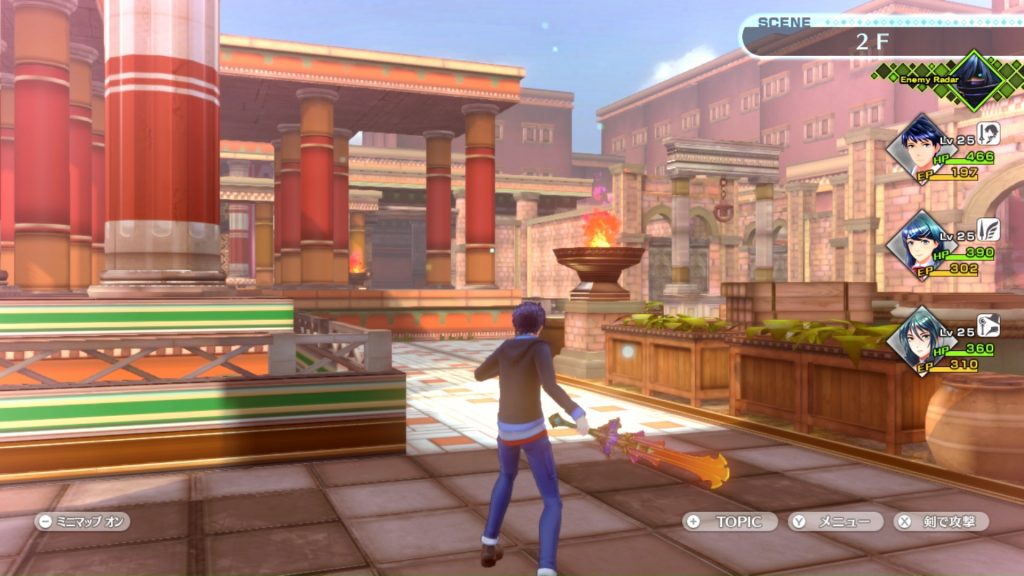
Combat happens to be the place where this RPG pulls in the majority of its Shin Megami Tensei elements with a sprinkling of Fire Emblem. Combat is a turn based affair that uses simple attacks, blocks, items, swapping with a reserve party member, and the incredibly important skills menu with up to three party members at a time battling against a wide array of enemies that all have various weaknesses that can be exploited. Like the Shin Megami Tensei series, every foe is weak to various elements such as wind, holy, fire, ice, etc. and even some weapon types that follow Fire Emblem‘s old weapon triangle weakness and strength system.
What helps set apart this style of targeting weaknesses while protecting against your own is the “session” system. Whenever an enemy (including the player as enemies can take advantage of this system as well) strikes an enemy with a skill that they are weak against, a “session” will likely be triggered. These sessions allow for numerous party members to unleash a chain of attacks that pile on the damage, though players will want to be careful when choosing their party as these session chains only trigger when every character’s skills work properly together. Things can get even crazier if a second “session” is triggered in the same chain, allowing for numerous attacks to string together within a single turn. These session attacks can often make or break a fight depending on difficulty and they can also begin to feel rather over the top at times so thankfully the ability to “speed up” some of the lengthier chains is a useful feature, especially when some bonus non-party characters eventually can be unlocked to jump in and perform attacks of their own.
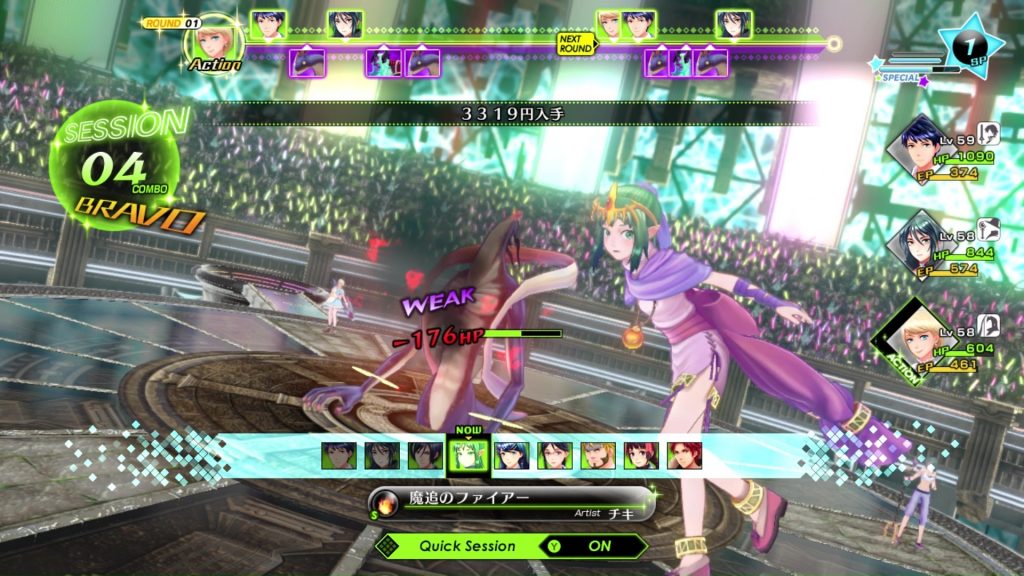
Alongside these sessions players will also eventually unlock special “ad-lib” performances for each character that occasionally trigger whenever said character hits an enemy weakness. These ad-libs feature their very own music number alongside a far more powerful attack that often provides other benefits alongside dealing damage. While all of these special features to combat may make it seem a bit easy sounding, it all comes down to how players build their characters. Like usual RPGs the party gains standard experience points from fighting but unlike others, they obtain skills by equipping gear that is crafted outside of battle from dropped items and mastering them one at a time. Each character only has so many skill slots available so players will need to often sacrifice skills if they find something better. Along these lines the various session chains, which require things such as an enemy being hit by fire allowing an ally to strike with lightning, to also play a factor as a sacrificed skill may ruin a possible chain players have built towards.
This level of combat depth is very appreciated in a game that features combat similar to that found in the SMT series and it truly does shine here, especially when players begin to put together some extremely powerful ability chains and mix in various buffs and debuffs but it is worth noting that players shouldn’t feel too intimidated by the system as it is easily explained and the game features a solidly designed difficulty curve to avoid throwing players into the deep end too quickly. Of course, if the player chooses, they can also partake in an early bonus dungeon that provides extensive amounts of experience and skill books but this should only really be used if needed as it can easily overpower players if used too much.
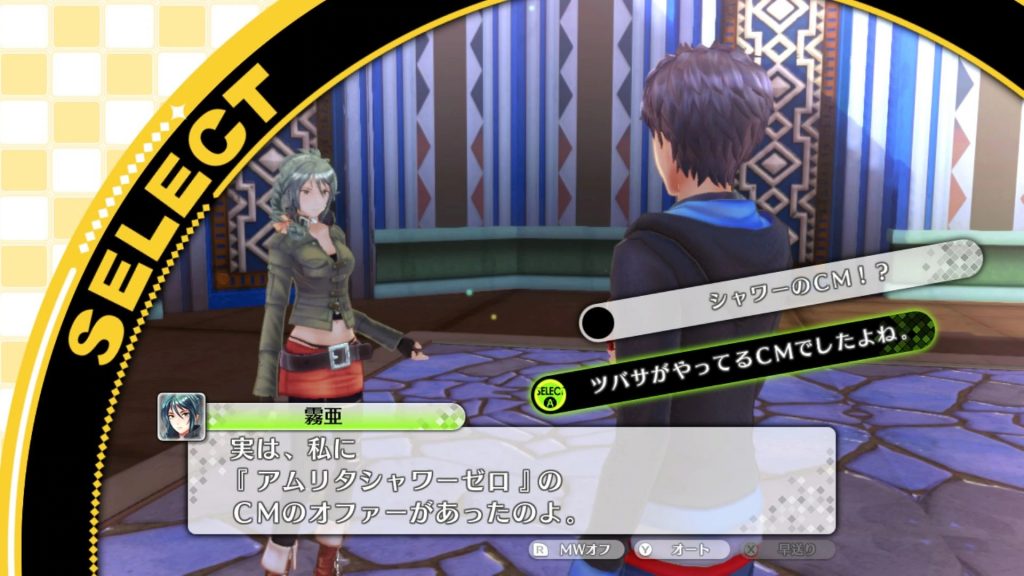
Outside of combat and standard exploration players will find that Tokyo Mirage Sessions #FE Encore has transitioned all of the features that used the Wii U gamepad into a single menu that is easily accessible at any time. This allows players to view “Topic” conversations between characters as well as pull up a full map of an area if needed, though a mini-map is also always displayed.
Visuals & Audio
The transition to the Nintendo Switch from the Wii U has helped a little bit but not quite as much as one would have hoped given the difference in consoles. Character and enemy models can still occasionally appear rough around the edges and exploring the city still features a variety of NPCs that are presented only as silhouettes but this isn’t too much of an issue primarily thanks to how terrific the game’s art style is. By using a vibrant color palette that varies wildly from different idolspheres to the normal world and featuring some gorgeously designed characters, players will find that the game is just as good looking as they may remember. This is especially true in the various cut-scenes that play in the game as well as the “ad-lib” performances. It is interesting to note that there are some inconsistencies early on during specific story chapter that sees characters commenting on risque outfits only for the designs in question to be completely clothed though this falls upon the continued censorship that carried over from the original Western release this is only a minor issue but it is one that continues in this version.
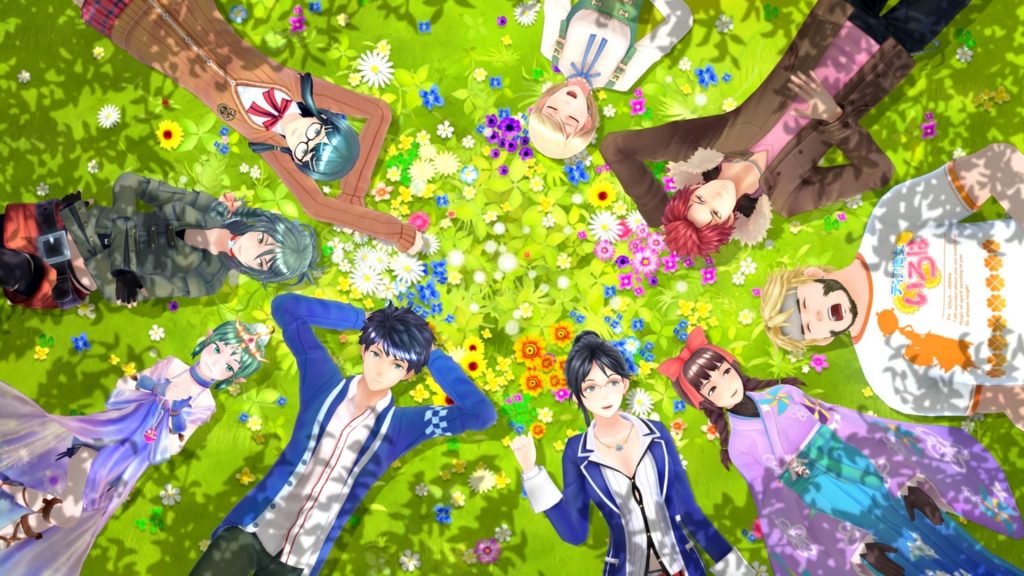
Rather than provide an English dub for this re-release Nintendo has kept with only providing the original Japanese voice work for the game. This isn’t much of an issue as the localization is handled well, but there is a remarkably large portion of unsubtitled dialogue in the game as none of the combat interactions between characters or remarks made during fights are given subtitles. This is disappointing as it is clear that some characters are making specific remarks, especially in important battles, and is something that could easily have been implemented. Thankfully the game’s soundtrack is absolutely amazing as it should be given the game’s themes around the entertainment industry. There are numerous vocalized songs mixed in with standard background music and players will be delighted with almost any track found in the game.
Overall
Those looking for an incredibly solid RPG for their Nintendo Switch will find that Tokyo Mirage Sessions #FE Encore delivers that in spades, especially if players never had a chance to try the original Wii U release. It features an entertaining, albeit heavily Japanese styled, storyline following a cast of likable characters and features a combat system that can be incredibly in-depth and flashy, especially if properly planned out. It may be a bit slow moving at times, lack an English cast, and the upgrade from the original version may feel a little lacking for those who already dove deep into original but this RPG that takes bits of fan favorite franchises and mixes them together to create a new game is certainly worth your time.
Capsule Computers review guidelines can be found here.

